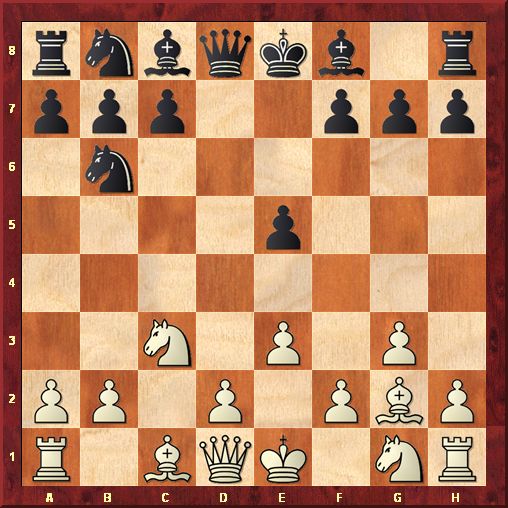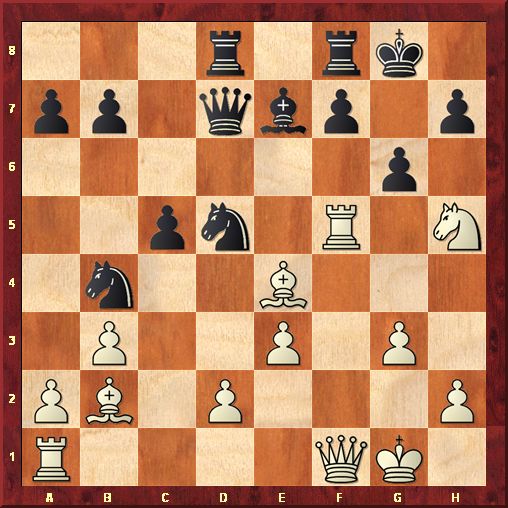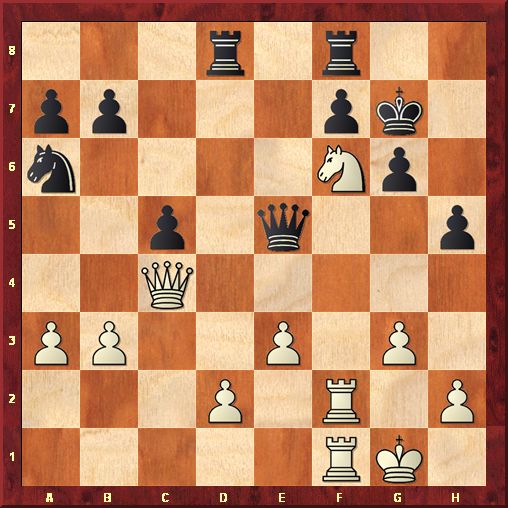It was not surprising to see the world's top two rated players, Magnus Carlsen of Norway and Levon Aronian of Armenia, sharing a lead at the 74th Tata Steel Chess Tournament at the Dutch coastal town of Wijk aan Zee. They amassed a 5.5-2.5 score and with five rounds to go, we can expect a dramatic finish.
But it was one single move that drew the attention away from the world's finest players. Since it created so many holes in white's position, the move could only have been invented by a chipmunk.

Six moves into the game Hikaru Nakamura-David Navara, the top-rated American grandmaster dented his position with a strange pawn move. He didn't create a crater, but the gap was big enough for a little chipmunk. You see these holes in the lawn and you never know how many chipmunks there are digging until the house collapses.
How to deal with chipmunk holes? You can plug them up, but the beasts usually pop them up somewhere else. Navara, the Czech grandmaster, chose the wait-and-see approach. After all, he controlled most of the central squares. But Nakamura's hibernation was short-lived. He opened the f-file, fixed his weaknesses and engaged in the modern tactical warfare, threatening Navara from a distance. His bishops were reaching far on the long diagonals and his heavy pieces settled on the only open file on the kingside. By move 17, he finally crossed the Rubicon into Navara's territory. The Czech made one mistake and by move 25 his position went downhill. Nakamura finished the game with a knight sacrifice.
Nakamura - Navara
Wijk aan Zee 2012
1.c4 e5 2.Nc3 Nf6 3.g3 d5 4.cxd5 Nxd5 5.Bg2 Nb6 6.e3?! (A shocking move. Only chipmunks make holes like this one. Human chessplayers are not supposed to do it after developing the light bishop on the long diagonal. Even the computer programs began hissing. They didn't like it at all. But a quick check of the databases reveals that the hole on d3 was not created by a chipmunk, but by a Latvian master Fricis Apsenieks at the chess olympiad in Munich in 1936.)

6...c5 (Navara is making sure the white d-pawn stays put. The blitzkrieg idea 6...Nc6 7.Nge2 Bf5, to secure the square d3 and at the same time go after the rook on a1 or the white queen, is simply met by 8.d4!, for example 8...Nb4 9.0-0 Bc2 10.Qe1 [10.Qd2? Nc4 11.Qe1 Nd3 loses the queen.] 10...Nc4, threatening 11...Nd3, and now white can calmly play 11.Bxb7! Nd3 12.Bc6+ Ke7 13.Nd5+ Kd6 14.Qc3 winning.
A natural development 6...Nc6 7.Nge2 Be7 8.0-0 0-0 makes sense, but after 9.f4, played successfully by Apsenieks and last year by the Russian GM Vadim Zvjaginsev, white's play is directed through the open f-file. Nakamura obviously knew the idea.)
7.Nge2 Nc6 8.0-0 Be7 9.f4!? (Opening the f-file is the only play white has left after Navara clamped down on the center, but it is a strong plan.) 9...exf4 (This is, in fact, a new move. In the game Soffer-Greenfeld, Tel Aviv 2011, black tried 9...0-0, but white was able to strike in the center 10.fxe5 Nxe5 11.d4, and after 11...Ng4 12.h3 Nf6 13.d5 Nc4 14.b3 Ne5 15.Bb2 Bd6 16.Nb5 Re8 17.Rc1 b6 18.Nec3 a6 19.Nxd6 Qxd6 20.Rc2 Bb7 21.Rcf2 Nfd7 22.Ne4 Qg6 23.Rf5 a5 24.Rg5 black resigned.
Black can't waste time to fortify the center with 9...f6 because of 10.fxe5!? fxe5 [10...Nxe5 11.d4!] 11.d4! cxd4 12.exd4 Nxd4 13.Nxd4 Qxd4+ 14.Qxd4 exd4 15.Nb5 and black is in trouble.) 10.Nxf4 (Suddenly the hole on d3 is not a big deal. White controls more squares in the center.) 10...0-0 11.b3 Bf5 12.Bb2 Qd7 13.Ne4 (The horses are included in the attack.) 13...Rad8 14.Rf2 Nb4 15.Qf1! (Generating great pressure from a distance, the queen disrupts the normal development 15...Rfe8 because of 16.Nh5 Bxe4 17.Rxf7! and the attack goes through.) 15...Bxe4 16.Bxe4 (White's bishop pair is threatening and black makes the first major slip.) 16...N6d5?! (Black should have neutralized the power of white's bishop pair with 16...f5 17.Bg2 Bf6, for example 18.Bxf6 Rxf6 19.a3 and white's edge is minimal.)

17.Nh5! (Nakamura crosses into Navara's space for the first time, weakening the position of the black king.) 17...g6 (Black wants to combine this move with 18...f5, but doesn't have time. Still, it is the right answer since after 17...f6 18.a3 Nc6 19.Bf5 Qd6 (19...Qe8 20.Qh3+-) 20.Qb1! h6 21.Bh7+ Kh8 22.Qg6 white wins.) 18.a3!? (A sensible human move, pushing black's cavalry back. The computers dive into the fantasy world with an unbelievable rook move 18.Rf5!?, preventing f7-f5, for example:

a) 18...gxf5 19.Bxf5 Qd6 20.Qh3 h6 21.Qg4+ Bg5 22.h4 and white wins.
b) 18...f6 19.Qf3 Rf7 [19...Nb6 20.Rxf6!] 20.a3 gxf5 21.Bxf5 Qd6 22.Qg4+ Kf8 23.axb4 Nc7 24.bxc5 Qxd2 25.Bd4 with white's advantage.
c) 18...h6 19.Qf3 Qd6 20.Qg4 Bg5 21.h4 gxf5 22.Bxf5 Qe7 23.Rf1 Nc6 24.e4 and white wins.
On the other hand, 18.Bg7 can be met with 18...Rfe8!? 19.a3 Qe6!, for example 20.Bf5 gxf5 21.axb4 f4 22.gxf4 Qg4+ 23.Rg2 Qxh5 24.Bh6+ Kh8 and white has only a perpetual check.) 18...Na6? (Black would like to support the knight on d5 with Na6-c7, but he does not have the time. The move gives away material. The other knight retreat was somehow better: 18...Nc6 19.Qd3 f5 20.Bxd5+ Qxd5 21.Qc3 Qe5 22.Qxe5 Nxe5 23.Bxe5 gxh5 24.Raf1 Rd5 25.Bc3 with white's edge.
The road to safety may well be 18...f5!? 19.Bxf5 Rxf5 20.Rxf5 Qxf5 21.Qxf5 gxf5 22.axb4 Nxb4 23.Rxa7 Rxd2 24.Rxb7 Rxb2 25.Rxe7 Nc2 with good chances to draw.) 19.Bxd5 Qxd5 20.Bf6! Qd6 21.Bxe7 Qxe7 22.Nf6+ Kg7
23.Qc4! (The queen jumps out decisively and threatens to land on the long diagonal a1-h8 or on the kingside. At the same time the square f1 is free for the other rook.)

23...Qe5 (Preventing 24.Qc3, but leaving the pawn on f7 without adequate defense.) 24.Raf1 h5 (Leads to a nice finish, but there was no hope anyway. After 24...Nc7 25.Ng4 Qe7 26.Qc3+ f6 27.Nxf6 Nb5 28.Qa1 Kh6 29.g4 wins.
After 24...Rd6 25.Nh5+! gxh5 26.Rxf7+ Rxf7 27.Qxf7+ Kh6 28.Rf5 Qa1+ 29.Kg2 Rg6 30.d4! and there is no good defense to 31.Qf8+ Rg7 32.Rf6+.)

25.Nxh5+! (The last blast, a pretty knight sacrifice that spells the end. Nakamura would not let the win slip away. The calculation is not difficult.) 25...Qxh5 (After 25...gxh5 26.Rxf7+ Rxf7 27.Qxf7+ Kh8 28.Rf5 wins.) 26.Rxf7+ Rxf7 27.Rxf7+ Kh6 (After 27...Kh8 28.Qc3+ Rd4 29.exd4 wins.) 28.Qf4+ g5 (Or 28...Qg5 29.Rh7+ wins.) 29.Qf6+ (29.Rf6+ Kg7 30.Qe5 also wins.) 29...Qg6 30.Qf1 Qh5 (After 30...Rxd2 31.Qh3+ Qh5 32.Rh7+ wins.) 31.Rxb7 (The alternative 31.h4 opens up the black king, threatening 32.Qf6+ Qg6 33.hxg5+ Kh5 34.Qf3+ Kxg5 35.Qf4+ Kh5 36.Qh4 mate.) 31...c4 32.Qf6+ Qg6 33.Qxd8 Qb1+ 34.Kf2 Black resigned.
Note that in the replay windows below you can click either on the arrows under the diagram or on the notation to follow the game.
